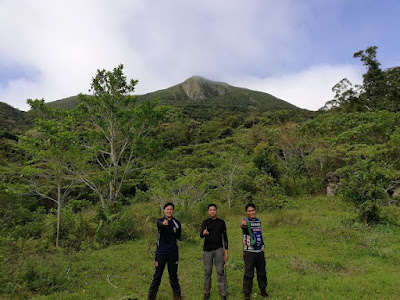Hiking the trail with a group of people is a great way to strengthen camaraderie and get to know new people completely. The person at the Lead has a very important role in keeping the group together, safe and high in spirits.
Here are some important roles that a good trail leader should have.
1. Be Observant for the Trail Markers
Most trails are either marked with ribbons or crossed leaves/branches to help hikers stay on the trail, as well as avoid trampling vegetation and getting lost.
If the trail starts to get sketchy or unclear where it leads next, the leader should stop and think back to when they saw the last trail marker. If you can see another marker ahead, try to head straight towards it. It’s also possible you missed a turn and might need to head back to the last marker you saw to find the trail again.
That's why we at Team Una encourages getting a local guide for a sound and hassle-free hike.
2. Stop at Trail Junctions and other Forks
Any time the trail forks or presents multiple paths, it’s very important that you wait for everyone in your group to catch up before proceeding on with the trail.
The most common way that groups get split up and hikers end up lost is when they’re too spread out to see each other and end up taking different paths at the same junction. See to it that you can at least see or hear the person ahead of you and behind you. Always bring a whistle in case of emergency
3. Keep the Team Informed
A good trail leader knows what lies ahead, and keeps the group well-informed so everyone knows what to expect. Is the terrain beginner friendly? Are there wild animals, plants or limatiks? How far is it to the next water source? How long is the terrain? Screening of participants must always be practiced most especially for a major hike with ratings 6/9 and above, I don't recommend newbies to join such an event unless that person is a marathoner or an elite athlete.
Even if you’ve never hiked this trail before, you can answer a lot of those questions by doing some serious research. It’s a good idea to consult blogs ahead of time to see what people have said about the trail in general.
4. Manage the Group's Pacing
There’s a common saying among hikers that you should “hike your own pace” and part of that means setting a pace that you are comfortable with.
But if you are the Pacer, it’s important to recognize how your pace impacts everyone else’s pace, and in turn, affects how they all feel about the hike.
If you’re going too fast, some people will try to keep up with you, pushing their heart rate up higher than they’d like, which will tire them down more easily and for some would eventually cause cramps. They’ll struggle more over steep terrain and need to take longer breaks to feel comfortable.
On the other hand, hiking too slowly can cause people to get jammed up behind you and will eat up more time which not follow the itinerary. This could have a great impact on morale if you’re not making good progress towards your group’s goal which includes places to visit, side trips and expected time to finish.
Be willing to adjust your pace and hike towards the middle or rear of the group if you sense that the pacing is getting slow because of people's morale during to relatively long trail.
During our descend from Mt Mcdo, I adjusted my pacing so that none of my groupmates will be left behind. It's more difficult to look for a missing teammate in the midst of a densely populated jungle most especially when darkness sets in.
5. Set Guidelines When Taking Rests
Whenever the group agrees to stop, it’s a great idea to quickly establish how long the break will be so that everyone is on the same page.
As a coordinator for some time, I usually try to establish whether the break will be:
2-3 Minutes - For grabbing a snack or water, or putting raincoat/ponchos
5-10 Minutes - Bathroom breaks, enjoying a quick view and taking pictures
20-40 Minutes - Eating a meal (breakfast, lunch or dinner) and enjoying the summit.
Make sure you stop for enough time that the person in the back has all the time they need to rest, take some trail food and take care of issues as well. I usually give 3-5 minutes for the last person to arrive depending on the steepness of the ascend or difficulty of the trail.
6. Safe Descend is More Important than Being the Fastest Hiker
If you’re the lead, it’s especially important to know how your decision-making can impact the rest of the group. What's more important is to ensure that all of your teammates are safe to descend back to jump off.
Taking ownership of the group can go a long way to make new hikers more at ease, earn their trust and most especially their respect.
***Credits to Hartley Brody from https://adventures.hartleybrody.com/hiking-trail-leader/ for the content reference.

Very well said. Kung pabilisan lng nman hanap ng ibang hiker dyan sumali nlang sila trail running bagay sila dun wla pang pakialaman #Balakayojan
ReplyDeleteTama, I agree with you Mam. Dapat ini-enjoy ang trail pti nrin ang camarederie with fellow hikers. Thanks.
DeleteUp for this post. Very informative.
ReplyDeleteThank you Sir. It was based from my experience.
Delete